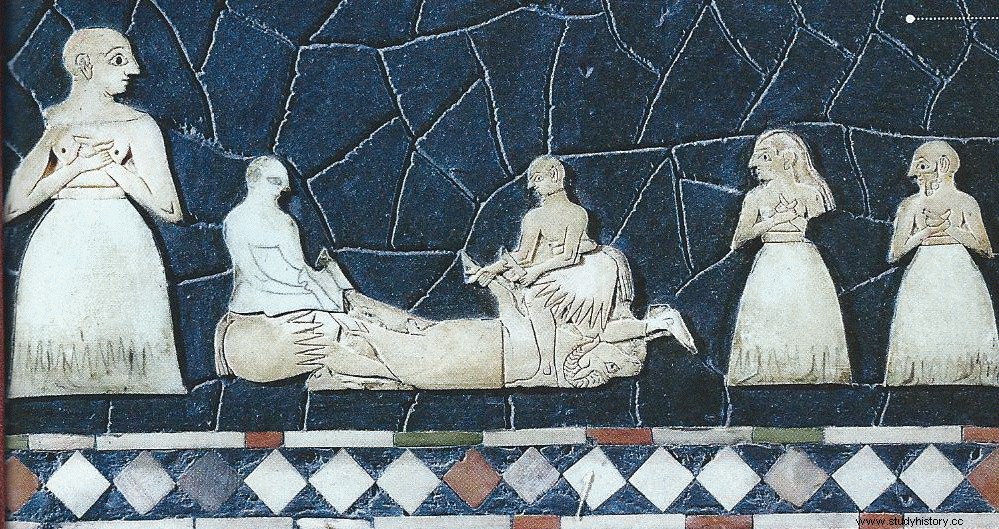The Sumerians were very fond of performing animal sacrifices. You have to understand that the Sumerian gods were like a huge ministry with all its bureaucracy added. They had over 3,600 gods and none of them paid much attention to the poor humans. The sacrifices could be used to grease the bureaucratic mechanism of that divine ministry, on the one hand by flattering the divinities and, on the other, brazenly bribing them. The god was supposed to actually reside in the temple, so the sacrificed animals served to feed him. The more animals, the happier the divinity on duty would be. A full stomach is a grateful stomach.
What was a sacrifice like? Well, as in other ancient religions, the poor victim was brought before the altar and his throat was cut there. Yes, with conditions. For example, the animal should not have external defects and, logically, some were appreciated more than others (white oxen were the Kobe's Steak of the time). The sacrificer or butcher was a priest specialized in his work, the Nashpatum . We don't know why, but he did his work totally naked. If it was a special festival and there were many animals to sacrifice, the help of a butcher was requested, who was given the honorary title of Sesgallum or “brother of the temple”. The most curious moment of the ceremony was not in the decorations, the dancers, the priestesses or the music, but just before cutting the throat of the animal. At that precise moment, the Nashpatum whispered in the ear of the poor animal the message that he had to transmit to the gods. Before the moment of sacrifice, the animals were well fed and the aim was to make them "happy"... an angry victim could deliberately mistransmit the message . This was so important that Sargon of Akhad , the founder of the Akkadian Empire, ordered the message to be whispered to him in two languages:Akkadian and Sumerian.

The lamb that gives title to this article lived in the city of Ur during the aforementioned empire. Specifically, during the reign of Manishtusu . They were almost nine years of peace and happiness in a normally convulsive empire. Just at the time of checking the entrails of the slaughtered lamb, two malformations appeared in the liver. This caused the omen interpreting priests and priestesses to rack their brains trying to figure out what it means. They used to use "manuals" where the omens and their meaning were collected, but this one in particular did not appear in any of them. He finally arrived from the capital, Agadé , the news that Manishtusu he had been assassinated in a coup. Then, a terrible civil war began that lasted almost five years.
Something like this doesn't happen every day. So, that omen was detailed, recorded in the divinatory books of Babylon and named, the lamb of Manishtushu . Centuries later, when these books were recovered in the excavations, this event was found with the text:
Manishtushu's curse, if the sacrificed animal has two malformations in its liver, the king will die and the kingdom will be divided.
They say there are many ways to get famous:some go to television and others… sink empires.
Contributed by Joshua BedwyR author of In a Dark Blue World
